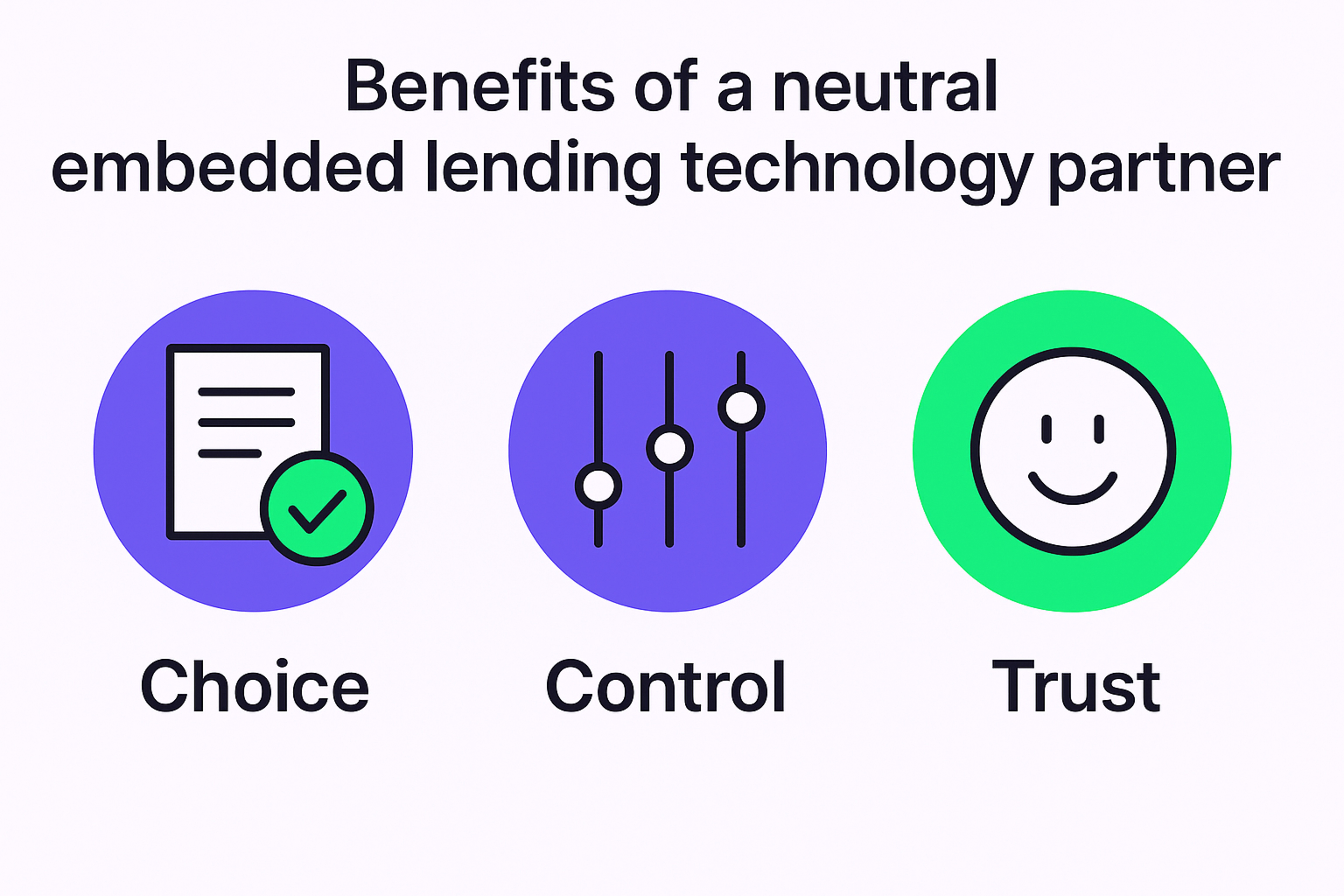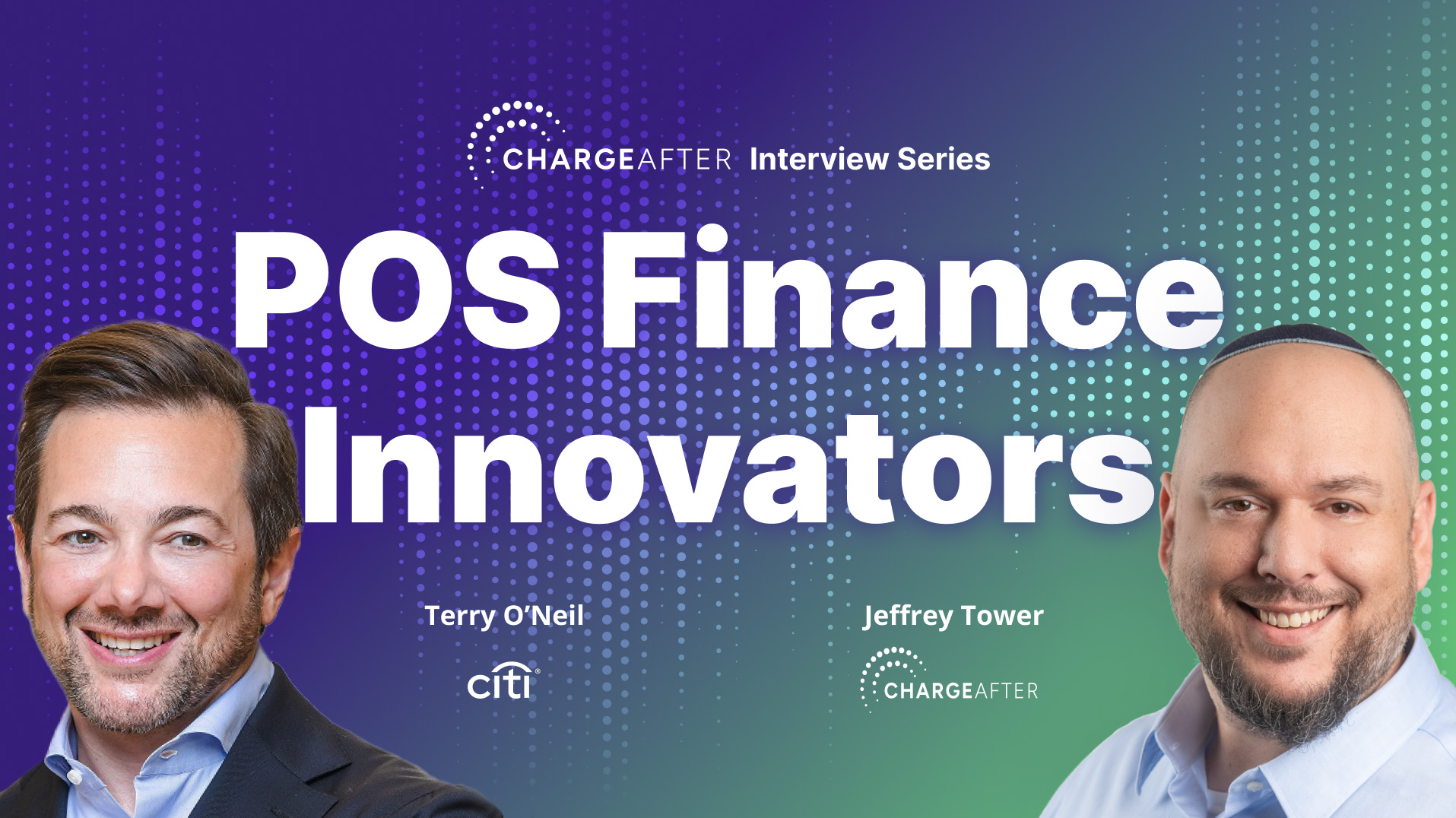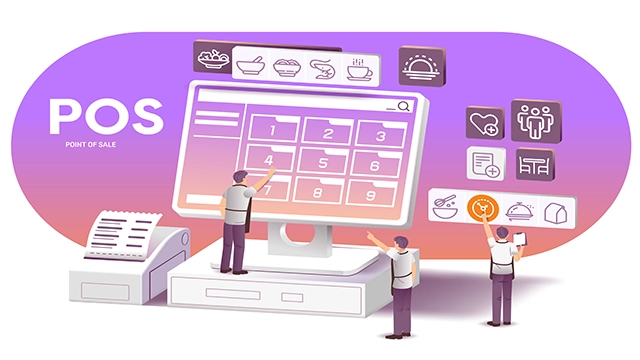Why Independence Matters in Embedded Lending: Choice, Control, and Trust for Merchants

We explore why independence matters in embedded lending, and how lender-neutral orchestration outperforms single-lender or captive platforms.
Embedded lending has become an essential infrastructure for modern commerce, as merchants look to provide financing at every point of sale. The ability to connect seamlessly with multiple lenders and present offers intelligently to customers in-store, online, in-home, or through call centres, determines conversion, approval rates, and customer experience.
At the core of embedded lending is the ability to build and orchestrate a diverse lender stack that delivers the right offers to the right customers, every time.
Multi-lender orchestration expands access to credit, increases approvals, and empowers customers to say “yes” more often.
The Art and Science of Lender Orchestration
At its core, lender orchestration is the ability to build and manage a dynamic lender stack, connecting multiple financing providers through a single platform to serve every customer segment, from prime to subprime.
Multi-lender orchestration expands access to credit, increases approvals, and empowers customers to say “yes” more often. It’s both a science and an art. The science lies in the technology: integrating lenders, routing applications, and optimizing performance across the lender network. The art lies in choosing the right lenders, building the most effective funnels, and presenting offers in a way that is clear, intuitive, and trusted by customers.
Different orchestration models approach the matching process in different ways. In a waterfall model, applications are routed sequentially from one lender to the next, starting with the chosen prime lender, followed by second and third-look options, until approval is achieved, a simple, effective approach for merchants seeking to maximize coverage. In a marketplace model, multiple lenders return offers simultaneously, giving customers the power to compare and choose the best fit. Advanced platforms can blend both approaches, dynamically optimizing lender sequence and logic based on data, risk tiers, and merchant strategy.
Done well, lender orchestration becomes a powerful engine for growth by maximizing approvals, improving customer experience, and strengthening trust across the entire financing journey.
Lender Orchestration in Action: HP
A great example of independent lender orchestration in practice comes from HP, one of the world’s leading technology brands.
By leveraging ChargeAfter’s platform and collaborating with three leading financial providers from ChargeAfter’s embedded lending network, Bread Financial™, Concora Credit, and Koalafi, HP can offer nearly every U.S. consumer a financing option when shopping for PCs, printers, or peripherals on HP.com.
Through a single integration, HP connects multiple lenders to deliver a seamless, inclusive financing experience. Qualified customers can access promotional financing, while others benefit from lease-to-own options with no credit required.
This multi-lender orchestration ensures HP can serve customers across the full credit spectrum — maximizing approval rates, expanding access to credit, and empowering more shoppers to say “yes” with confidence. It’s a powerful demonstration of how independence and orchestration together unlock growth, accessibility, and trust across the entire financing journey.
Why Independence Matters
Even the most advanced orchestration loses its value when it isn’t independent. True lender orchestration only works when every lender in the network competes on a level playing field — without bias, favoritism, or dependency on a single issuer’s strategy.
Independence means choice, control, and trust. It ensures merchants have access to the full lending ecosystem, flexibility to design their lender mix, transparency in how offers are displayed, and resilience against market shifts. It also empowers merchants to select and manage their own lender relationships within a broad, embedded lending network, ensuring true autonomy in how they serve their customers. In short, independence is what turns embedded lending from a feature into a strategic advantage. These are some of the key advantages of a neutral lender network.
1. Access to the Full Lending Ecosystem
Independence means no single bank, issuer, or financial institution controls the network. Merchants gain access to a broad and diverse range of lenders — prime, near-prime, and subprime — all through one unified integration.
This breadth ensures more customers can be approved, more baskets are converted, and merchants can serve a wider range of buyers with confidence. Independence also opens the door to innovation: new lenders and products can join freely, driving continuous growth and healthy competition.
2. Flexibility to Build the Right Lender Mix
Every business is unique, with its own products, price points, and customer profiles. Independent orchestration allows merchants to choose and configure the lenders that best fit their strategy.
They can fine-tune routing logic, lender order, and offer presentation to align with their commercial goals. This flexibility ensures merchants aren’t locked into a single lender’s underwriting model or promotional calendar. They can choose which lenders to include, swap out providers as needed, and immediately access other lenders from the network without disruption, maintaining continuity and control. Instead, they have the agility to adapt as their business evolves and as customer expectations shift.
3. Fairness and Transparency
In an independent network, no lender is favored. Offers are displayed transparently and fairly, so customers can make informed decisions based on what truly fits their needs.
This neutrality builds trust with shoppers who see authentic choice, and with lenders who know their offers are competing on merit, not platform preference. It’s a model that creates confidence at every layer of the ecosystem: lenders, merchants, and consumers.
4. Business Resilience and Negotiation Power
Independence protects merchants from concentration risk. When financing is tied to a single lender or issuer, any change in credit policy, technology roadmap, or commercial terms can have an outsized impact.
By diversifying their lender stack through an independent platform, merchants safeguard business continuity and gain leverage in commercial negotiations. Redundancy is built in, if one lender’s policy changes, another can be activated, minimizing disruption. Independence ensures stability — and the freedom to grow on their own terms.
5. Faster Innovation and Adaptability
Independent orchestration enables faster innovation. Without the constraints of a single lender’s roadmap or a limited network, independent platforms can integrate new financing products, partners, and technologies more quickly.
This adaptability allows merchants to respond rapidly to emerging trends, keeping them ahead of the competition.
6. Enhanced Customer Experience
For shoppers, independence translates directly into better experiences. They’re offered real choices and the best terms. That sense of control drives satisfaction, repeat purchases, and long-term loyalty. When customers trust the financing process, they’re more likely to complete the transaction, and to return.
7. Long-Term Strategic Alignment
Independent platforms are built to serve the merchant’s growth, not a lender’s balance sheet.
Every integration, partnership, and innovation is aligned to improve merchant outcomes and expand consumer access to credit.
That alignment ensures embedded lending remains a strategic enabler — supporting merchant goals, fostering healthy competition among lenders, and ultimately strengthening the broader financing ecosystem.
Independence as the Future of Embedded Lending
As embedded finance becomes the default way consumers access credit, independence isn’t just a feature — it’s the foundation of a healthy, competitive ecosystem.
Neutral, multi-lender orchestration ensures merchants retain control, lenders compete fairly, and consumers receive the financing options that truly fit their needs. Independence delivers the transparency, flexibility, and trust that make embedded lending work for everyone — not just a select few.
The future of commerce will be defined by open, intelligent networks that empower merchants to build financing strategies aligned with their goals, not bound by an external agenda. Independent orchestration is what makes that future possible.
Independence is the key to access, innovation, and growth, ensuring every transaction, partnership, and customer interaction creates value for the entire ecosystem. Because in the end, independence isn’t optional — it’s essential.
 |
About Kevin Lawrence
VP Global Lender Relations – Kevin has worked in the banking and finance industry for over a decade. He has worked closely with some of North America’s largest banks, financial institutions, and retailers. Kevin is an expert in embedded consumer financing and B2B financing. He has a deep understanding of current trends and where the industry is heading. |





